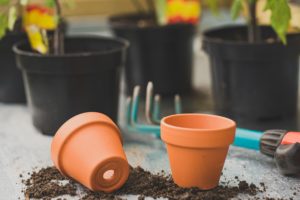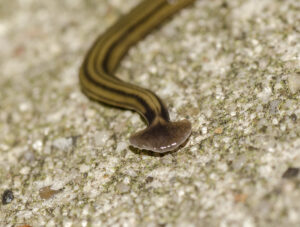Why Disinfect Tools?
Tools that have come into contact with diseased plants can transmit pathogens to other plants if not sanitized properly. Some may think that rinsing tools with water is enough to remove pathogens. But just as washing our hands with water does not remove bacteria, washing tools with only water will not remove harmful plant pathogens.
In this post, we will look at four of the most effective disinfecting agents and the steps you can take to sanitize your hand tools to stop the transference of plant pathogens.
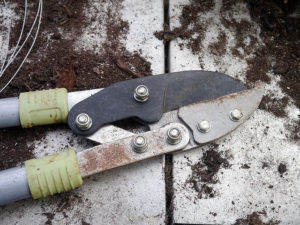
This article contains affiliate links. If you make a purchase using one of these links, I will receive a very small commission at no additional cost to you, and it will help me maintain this website. Rest assured, I only recommend products I actually like!
Rubbing Alcohol
Isopropyl alcohol, also known as rubbing alcohol, that has a concentration of 70% to 100%, will kill bacteria, viruses, and fungi on hard surfaces. An exception would be fire blight. In test studies, rubbing alcohol, even in concentrations greater than 70%, did not always kill fire blight.
To use, apply rubbing alcohol with a paper towel, wiping surfaces of the tool, especially the blades. You can purchase rubbing alcohol in 32 ounce containers.
It is important to remember that alcohol of any kind is flammable, so take care when using it.
Bleach
Bleach is a common disinfectant with numerous household applications. Its cost-effectiveness makes it a popular choice for gardeners as well. To make a solution, mix one part of bleach with nine parts of water. Some recommend soaking tool blades in the mixture for fifteen to thirty minutes and then rinsing. Others, only submerge the blades momentarily before rinsing. You will need to decide which soaking duration works best for you.
The downside to using bleach, even if diluted, is that it gives off harmful fumes, and it can damage clothes and skin. So be sure to exercise care when using it.
If for whatever reason, you need to dispose of excess bleach solution, it is best to pour it down the drain. However, if you choose to dispose of it outside, you will need to heavily dilute it before pouring it on the ground.
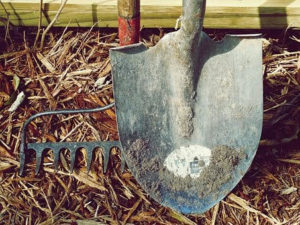
Household Cleaners
Some university agricultural extension offices recommend using a cleaner with 1% alkyl dimethyl benzyl ammonium saccharinate to disinfect garden tools. This chemical is the same active ingredient that is found in household cleaners like Lysol® All-Purpose Cleaner, for example. Extension agents caution, however, to avoid applying the cleaner to wood, painted surfaces, or acrylic plastics as it could cause damage with repeated exposure. Be sure to follow the manufacturer’s directions when using.
Clorox Wipes® with bleach is another option for sanitizing garden tools as they purportedly kill bacteria on contact. This method is better suited for small hand tools such as pruning loppers, shears, and trowels as opposed to shovels and other larger garden tools. The wipes have an advantage over other methods because there is no solution to prepare, and they are disposable. While the wipes are convenient, they are not as cost-effective as some of the other methods.
Hydrogen Peroxide
Not only is hydrogen peroxide (3%) an effective treatment for fungus gnats, but it is also an inexpensive way to safely disinfect tools. For larger tools, you can make a soaking solution by adding two cups of hydrogen peroxide(3%) to one gallon of water. Soak the blades in the solution for about 20 to 30 minutes. For smaller tools, apply undiluted hydrogen peroxide via a cloth or paper towel to wipe the blades. Note that hydrogen peroxide can damage wood and plastic handles over time so try not to expose tool handles if possible.
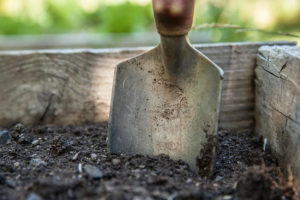
Commercial Farm Products
Oxidate, a hydrogen dioxide product, is a broad-spectrum bactericide and fungicide used to kill plant pathogens and disinfectant tools. It is classified as organic by OMRI, however, product labeling directs users to take precautions when mixing and applying. Oxidate is used primarily by commercial growers and is not cost-effective for home gardens.
3 Steps to Cleaning and Disinfecting Tools
Here are three easy steps to take when cleaning and disinfecting your garden tools. It is a good idea to follow this procedure after a tool is used on one plant and before moving on to another plant. This will help prevent the transference of any organisms from plant to plant. It is even more important to follow the steps when you prune dead or diseased leaves, stems, and fruit from plants that you know are infected.
Step 1: Use water from a garden hose to remove dirt and debris from the tool. Use a stiff brush if necessary.
Step 2: Soak or wipe surfaces of the tool, especially the blades, with one of the agents listed above.
If you have a lot of pruning to do you can carry a spray bottle of cleaner and a cloth with you as you work your way through the garden.
Step 3: Dry tools thoroughly. If necessary, you can apply a protective coat of mineral oil to the blades. If rust is present, you can use low to medium grade steel wool to remove it, followed by an application of oil.
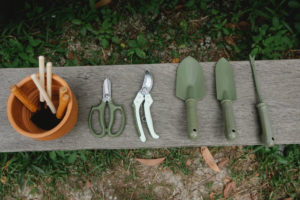
Garden tools are an important resource for any sized garden. By cleaning and disinfecting them properly you will prevent the spread of plant pathogens in your garden.
Thank you for reading this article! If you found it helpful, please consider sharing it with others via email and social media!

